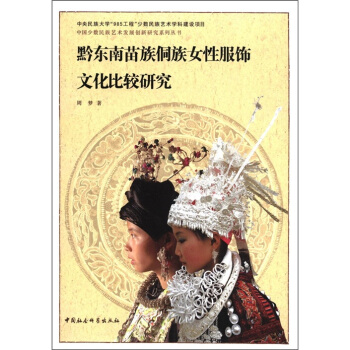![社会、历史背景下的跨文化交际(第4版) [Intercultural Communication in Contexts]](https://pic.windowsfront.com/10214330/22b2487f-d5a0-44f7-9322-dc6dca47ba2a.jpg)

具体描述
内容简介
《社会、历史背景下的跨文化交际(第4版)》作者客观地审视了目前跨文化交际研究的众多方法,在综合和批判的基础上,提出了一个新的研究视角一辩证法。作者首先强调应在社会、政治、历史等大环境中研究和探索跨文化交际;其次,作者非常重视权势与交际的关系,交际中的交往双方地位“永远不平等”的观点,是《社会、历史背景下的跨文化交际(第4版)》两位作者的独特见解;再之,《社会、历史背景下的跨文化交际(第4版)》把研究重点放在美国国内不同亚文化或不同共存文化之间的交际方面,对读者了解和认识美国不同群体文化的交际大有助益。作者简介
Judith Martin grew up in Mennonite communities, primarily in Delaware and Pennsylvania. She has studied at the Universite de Grenoble in France and has taught in Algeria. She received her doctorate at the Pennsylvania State University. By background and training, she is a social scientist who has focused on intercultural communication on an interpersonal level and has studied how peoples communication is affected as they move or sojourn between international locations. She has taught at the State University of New York at Oswego, the University of Minnesota, the University of New Mexico, and Arizona State University. She enjoys gardening, going to Mexico, and hosting annual Academy Awards parties, and she does not miss the harsh Midwestern winters.Tom Nakayama grew up mainly in Georgia, at a time when the Asian American presence was much less than it is now. He has studied at the Universite de Paris and various universities in the United States. He received his doctorate from the University of Iowa. By background and training, he is a critical rhetorician who views intercultural communication in a social context. He has taught at the California State University at San Bernardino and Arizona State University. He is a voracious reader and owns more books than any other faculty member in his department. He watches TV-especially baseball games-and lifts weights. Living in the West now, he misses springtime in the South.
内页插图
目录
PrefaceTo the Student
PART I FOUNDATIONS OF INTERCULTURAL COMMUNICATION
Chapter 1 Why Study Intercultural Communication?
The Technological Imperative
Technology and Human Communication
Access to Communication Technology
The Demographic Imperative
Changing U.S. Demographics
Changing Immigration Patterns
The Economic Imperative
The Peace Imperative
The Self-Awareness Imperative
The Ethical Imperative
Relativity Versus Universality
Being Ethical Students of Culture
Discussion Questions
Activities
References
Chapter 2 The History of the Study of Intercultural Communication
The Early Development of the Discipline
Nonverbal Communication
Application of Theory
An Emphasis on International Settings
An Interdisciplinary Focus
Perception and Worldview of the Researcher Three Approaches to Studying Intercultural Communication
The Social Science Approach
The Interpretive Approach
The Critical Approach
A Dialectical Approach to Understanding Culture and Communication
Combining the Three Traditional Paradigms:The Dialectical Approach
Six Dialectics of Intercultural Communication
Keeping a Dialectical Perspective
Discussion Questions
Activities
References
Chapter 3 Culture, Communication, Context, and Power
What Is Culture?
Social Science Definitions: Culture as Learned, Group-Related Perceptions
Interpretive Definitions: Culture as Contextual Symbolic Patterns of Meaning
Critical Definitions: Culture as Heterogeneous, Dynamic, and a Contested Zone
What Is Communication?
The Relationship Between Culture and Communication
How Culture Influences Communication
How Communication Reinforces Culture
Communication as Resistance to the Dominant Culture System
The Relationship Between Communication and Context
The Relationship Between Communication and Power
Discussion Questions
Activities
References
Chapter 4 History and Intercultural Communication
From History to Histories
Political, Intellectual, and Social Histories
Family Histories
National Histories
Cultural-Group Histories
History, Power, and Intercultural Communication
The Power of Texts
The Power of Other Histories
Power in Intercultural Interactions
History and Identity
Histories as Stories
Nonmainstream Histories
Hidden Histories
Intercultural Communication and History
Antecedents of Contact
The Contact Hypothesis
Negotiating Histories Dialectically in Interaction
Discussion Questions
Activities
References
PART II Intercultural Communication Processes
Chapter 5 Identity and Intercultural Communication
Thinking Dialectically About Identity
The Social Science Perspective
The Interpretive Perspective
The Critical Perspective
Identity and Language
Identity Development Issues
Minority Identity Development
Majority Identity Development
Social and Cultural Identities
Gender Identity
Age Identity
Racial and Ethnic Identities
Characteristics of Whiteness
Religious Identity
Class Identity
……
PART Ⅲ Intercultural communication Applications
Credits
精彩书摘
About a quarter of Americans live unconnected to the Internet, meaning that they have never been online and dont know many others who use the Internet (Lenhart et al., 2003).Of those who do not use the Internet, 41% live in households earning less than $30,000; only 6% come from households earning more than $75,000 (Lenhart et al., 2003).
Even when education and income are the same, blacks and Latinos are less likely to go online than whites (Hacker & Steiner, 2002; Jackson, Barbatsis, Biocca, von Eye, Zhao, & Fitzgerald, 2004).
Even larger inequities exist outside the United States: There are more telephones in New York City than in all of rural Asia, more Internet accounts in London than all of Africa. As much as 80% of the worlds population has never made a phone call.
Finland alone has more Internet users than the whole of Latin America.
The estimated number of personal computers in Australia is 10 million, in New Zealand is 1.5 million, in the United States is 178 million, and in all of Africa 7.55 million.
The United States, Canada, France, Germany, Italy, Japan, Russia, and the United Kingdom account for less than 20% of the worlds population but "own" 80% of Internet hosts and most traffic.
前言/序言
THE INCREASING IMPORTANCE OF INTERCULTURAL COMMUNICATION IN THE RAPIDLY CHANGING WORLDWhen we look back upon the international and intercultural situation at the time we first began writing this book, we recognize how rapidly the world has changed, with even more pressing issues for intercultural communication scholars and practitioners. In the third edition of this book, we were writing in the shadow of the events of September 11. Since then, human events such as the invasion of Iraq and bombings in London, Russia, and Spain have focused more attention on interethnic and religious conflicts. Natural disasters such as the tsunami in Indonesia and hurricanes Katrina and Rita that hit the Gulf Coast summoned a variety of positive responses, including tremendous caring and com-passion across intercultural and international divides, but these tragedies also exacerbated enduring social-group inequities. In addition, the increasing use of the Internet and cell phones has made intercultural interactions that may once have seemed distant or peripheral to our lives now far more immediate.
In this climate, the study of intercultural communication takes on special significance, offering tools to help us as we grapple with questions about religious and ethnic differences, hate crimes, and many other related issues. Those who study, teach, and conduct research in intercultural communication are faced with an increasing number of challenges and difficult questions to address: Is it enough to identify differences among people? Are we actually reinforcing stereotypes in emphasizing differences? Is there a way to understand the dynamics of intercultural communication without resorting to lists of instructions? Dont we have to talk about the broader social, political, and historical contexts when we teach intercultural communication? How can we use our intercultural communication skills to help enrich our lives and the lives of those around us? Can intercultural communication scholars promote a better world for all?
用户评价
我是一名文化研究领域的学生,对语言、权力和身份认同的相互作用有着浓厚的兴趣。一直以来,我都在寻找能够将这些抽象概念与实际的跨文化互动联系起来的学术资源。《社会、社会、历史背景下的跨文化交际》(第4版)[Intercultural Communication in Contexts] 这个书名,立刻引起了我的注意,因为它似乎承诺了一个整合性的视角。我非常期待书中能够深入探讨,社会结构(如阶级、性别、种族)如何在跨文化交际中扮演角色,以及历史进程(如战争、移民、殖民)如何塑造了不同群体之间的权力动态和沟通模式。我特别想了解,书中是否会分析,在后殖民语境下,原殖民者与被殖民者后裔之间的沟通,如何受到历史创伤和权力不平等的影响?此外,我对“情境”(Contexts)的解读充满了期待,我希望能看到书中如何运用不同理论框架(如批评性理论、符号互动论等)来分析跨文化交际的微观和宏观情境,并揭示语言和非语言符号在不同情境下所承载的复杂含义。如果这本书能够提供关于如何批判性地理解和参与跨文化对话的工具,并鼓励读者反思自身的文化偏见,那将极大地丰富我的学术研究。
评分作为一名刚开始接触跨文化交际理论的学生,我常常感到无从下手,市面上许多资料要么过于碎片化,要么充斥着我难以理解的术语。《社会、社会、历史背景下的跨文化交际》(第4版)[Intercultural Communication in Contexts] 这个书名,听起来就非常具有指导性和系统性。我希望这本书能够为我建立一个清晰的知识框架,让我能够逐步理解跨文化交际的核心概念。尤其吸引我的是“社会、历史背景”的提法,这让我预感书中不会仅仅停留在介绍不同文化习俗的层面,而是会引导我思考这些习俗是如何在特定的社会和历史条件下形成的。例如,书中是否会解释,为什么某些文化特别注重“面子”,这背后可能有哪些社会等级或历史原因?又或者,在处理跨文化冲突时,不同文化群体所采取的策略,是否与他们长期以来的历史经历有着内在联系?我期待书中能够通过清晰的语言和丰富的实例,帮助我理解不同文化群体在沟通中的潜在假设和价值观,并教会我如何避免常见的交际陷阱。
评分作为一名对全球化和文化多样性深感好奇的学生,我一直渴望找到一本能够深入浅出地解释跨文化交际复杂性的著作。《社会、历史背景下的跨文化交际》(第4版)[Intercultural Communication in Contexts] 在我寻找的过程中脱颖而出,尽管我还没有机会通读这本书的全部内容,但仅仅是其标题就激起了我强烈的求知欲。我曾尝试接触过一些介绍跨文化沟通的书籍,但它们往往过于理论化,或者侧重于单一的文化视角。这本书的“社会、历史背景”的定位,预示着它将提供一个更广阔、更具深度的分析框架。我非常期待书中能够探讨不同社会结构和历史进程如何塑造了人们的沟通方式,例如,殖民历史对不同文化群体交流模式的影响,或者全球化浪潮下新兴的跨文化交流挑战。同时,我也对书中可能涉及的“情境”(Contexts)这一概念非常感兴趣。我理解,沟通从来不是孤立发生的,而是根植于特定的社会、政治、经济和文化情境之中。这本书能否清晰地阐释,在不同情境下,例如商务谈判、学术交流、跨国婚姻等场景中,跨文化交际的原则和策略会有何不同?我希望它能提供丰富的案例研究,让我们能够看到抽象理论如何在现实世界中得到应用,甚至是“变形”。这对于我这样希望将理论知识应用于实践的学习者来说,是至关重要的。
评分作为一个在跨国公司工作多年的资深从业者,我深切体会到跨文化交际能力在现代职场中的重要性,尤其是在我所在的行业,团队成员来自世界各地,项目也常常涉及多个国家。我最近了解到《社会、社会、历史背景下的跨文化交际》(第4版)[Intercultural Communication in Contexts] 这本书,其书名立刻吸引了我。我预想这本书能够提供一种全新的视角来审视我在日常工作中遇到的沟通障碍和挑战。例如,我一直好奇为何在某些跨文化合作中,即使语言障碍不大,但沟通效率依然不高。我猜测这本书会深入分析隐藏在语言之下的文化价值观、非语言沟通差异,以及不同文化对时间、权力、个人主义与集体主义等概念的理解差异。更重要的是,其“历史背景”的强调,让我觉得这本书不仅仅停留在表面的技巧层面,而是会追溯这些文化差异的根源。我希望书中能够解释,例如,某些国家在决策过程中倾向于层层汇报的习惯,其历史根源是什么?不同文化群体在面对冲突时采取的策略,又与他们长期的历史经验有何关联?如果这本书能提供关于如何在复杂多变的国际商务环境中,更有效地建立信任、避免误解、促成合作的实用洞见,那对我而言将是无价的。
评分我是一名对全球化现象充满热情的研究者,深知跨文化交际在理解和应对全球性挑战中的关键作用。《社会、社会、历史背景下的跨文化交际》(第4版)[Intercultural Communication in Contexts] 这个书名,立刻吸引了我的目光,因为我一直认为,脱离了社会和历史的语境来谈论跨文化交际是片面的。我非常期待这本书能够提供一个深入的分析,探讨宏观的社会力量(例如,经济全球化、政治意识形态的传播、科技发展)和长期的历史变迁(例如,人口迁移、帝国兴衰、文化交流的周期性)如何塑造了当代的跨文化交际景观。我猜测书中可能会涉及,例如,互联网的普及如何改变了信息的传播速度和深度,以及这给跨文化理解带来的机遇与挑战。此外,“情境”(Contexts)的强调,也让我相信这本书会超越简单的文化对比,而是会引导读者去分析具体的交际情境,并理解在不同情境下,权力、身份和知识的生产如何影响着沟通的有效性和公正性。我希望这本书能够提供一个批判性的视角,帮助我们理解跨文化交际中存在的权力不对等,并思考如何构建更具包容性和可持续性的全球对话。
评分很好很好很好很好很好很好很好很好
评分内容很丰富,价格也很公道,不过纸质不好,一翻开都是纸屑和纸灰。
评分很好很好很好很好很好很好很好很好
评分haikeyihaikeyi
评分haikeyihaikeyi
评分很好很好很好很好很好很好很好很好
评分内容很丰富,价格也很公道,不过纸质不好,一翻开都是纸屑和纸灰。
评分haikeyihaikeyi
评分很好很好很好很好很好很好很好很好
相关图书
本站所有内容均为互联网搜索引擎提供的公开搜索信息,本站不存储任何数据与内容,任何内容与数据均与本站无关,如有需要请联系相关搜索引擎包括但不限于百度,google,bing,sogou 等,本站所有链接都为正版商品购买链接。
© 2025 windowsfront.com All Rights Reserved. 静流书站 版权所有









![卫礼贤之名:对一个边际文化符码的考察 [The Name of Richard Wilhelm Survey on a Borderline Cultural Code] pdf epub mobi 电子书 下载](https://pic.windowsfront.com/10917785/2167ef7b-8562-4a3b-8b9b-e6ea35acf344.jpg)










